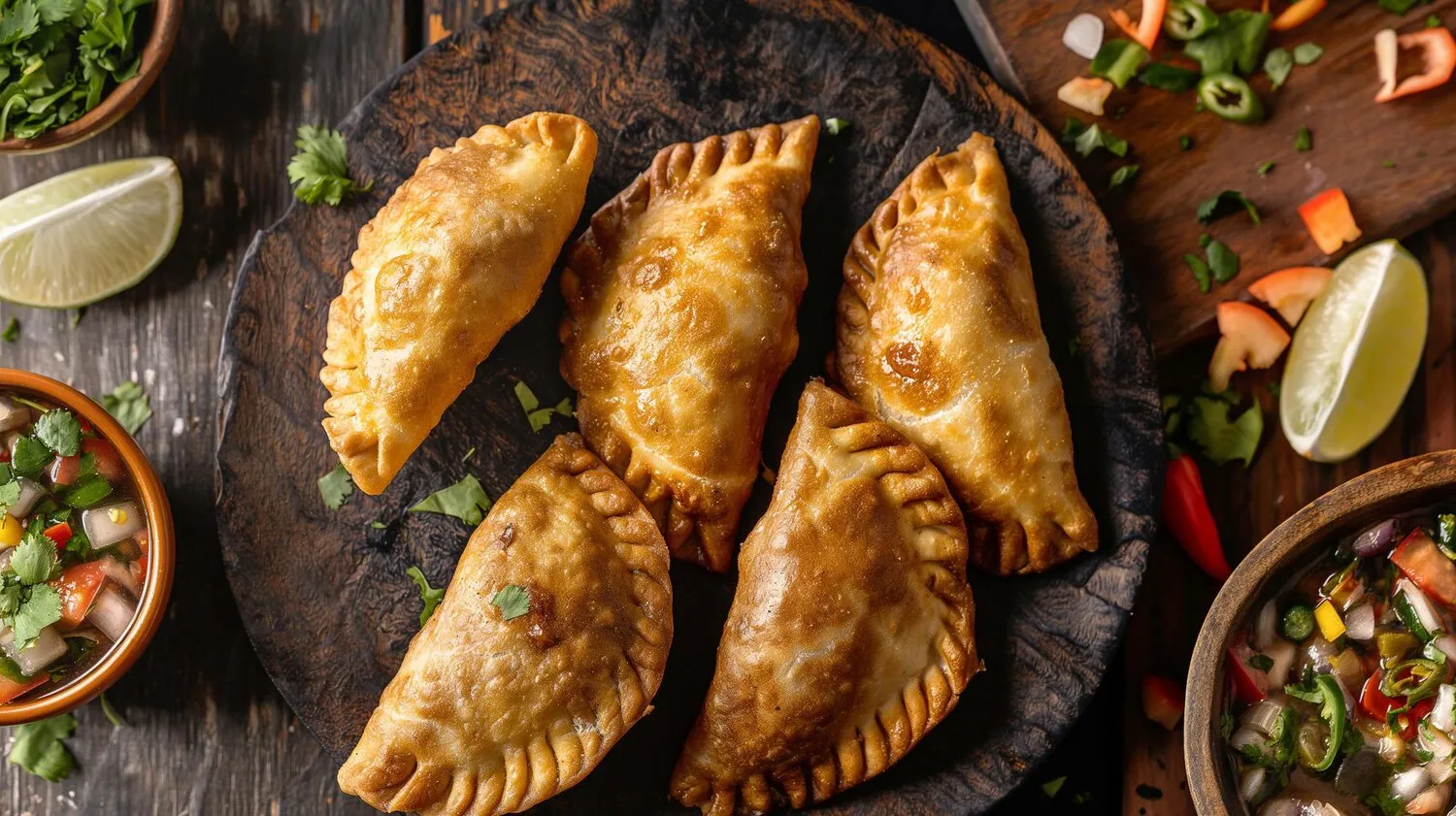
Empanadas
Pachamama often has empanadas on their menu, which are a type of baked or fried turnover consisting of pastry and a filling. The filling usually includes meat, cheese, or vegetables.
Nutrition Facts
* The % Daily Value (DV) tells you how much a nutrient in a serving of food contributes to a daily diet. 2,000 calories a day is used for general nutrition advice.
Pachamama
Empanadas have a long history with roots tracing back to Galicia, Spain. Influenced by Moorish cuisine and the Arab presence in Spain, they evolved from larger meat pies into the individual, portable pastries we know today. The concept then spread throughout Latin America during the Spanish colonial period, adapting to local ingredients and culinary traditions in each region.
Empanadas hold a significant cultural role as a versatile and accessible food, often associated with celebrations, family gatherings, and everyday meals. They represent regional culinary identities and offer a comforting and familiar taste of home.
Family Gatherings
Empanadas are often prepared in large batches during family gatherings and holidays, with each family having their own unique recipes and variations passed down through generations. The communal preparation and sharing of empanadas symbolize unity and tradition.
Regional Variations
Each Latin American country and region boasts its own distinct empanada styles and fillings. From the spicy beef empanadas of Argentina to the seafood-filled empanadas of Chile, these regional variations reflect the local ingredients and culinary preferences of each area.
Street Food Staple
Empanadas are a popular street food item, offering a convenient and affordable meal for people on the go. Street vendors often sell a variety of empanadas with different fillings, providing a quick and satisfying culinary experience.
Empanadas offer a delightful combination of savory and sometimes sweet flavors, depending on the filling. Common flavor profiles include meaty richness, cheesy creaminess, and fresh vegetable notes, all encased in a flaky or savory pastry.
The specific flavors depend heavily on the filling. Beef empanadas often feature cumin, paprika, and garlic, creating a warm and savory profile. Chicken empanadas might include onions, peppers, and olives for a briny and slightly sweet taste. Cheese empanadas are known for their simple yet satisfying creamy and salty flavor. Vegetable empanadas can range from earthy mushrooms and spinach to sweet corn and peppers, offering a diverse range of flavor combinations. The dough itself can be subtly flavored with spices or herbs.
Dough Preparation
For a flaky crust, use cold butter or shortening and avoid overworking the dough. Rest the dough in the refrigerator for at least 30 minutes before rolling it out to allow the gluten to relax.
Filling Moisture Control
Ensure the filling is not too wet, as excess moisture can make the dough soggy. Drain any excess liquid from the filling before assembling the empanadas.
Sealing Techniques
Properly seal the empanadas to prevent the filling from leaking out during baking or frying. Crimp the edges with a fork or use a traditional repulgue technique.
Cooking Temperature
For baked empanadas, bake at a moderate temperature (375°F or 190°C) until golden brown. For fried empanadas, use a medium-high heat to achieve a crispy exterior without burning the dough.
Explore additional Savory pastry dishes and restaurants
Explore Savory pastryDiscover top dining spots and culinary experiences in Paris.
Explore ParisLearn more about the food culture, restaurant scene, and culinary heritage of France.
Explore France